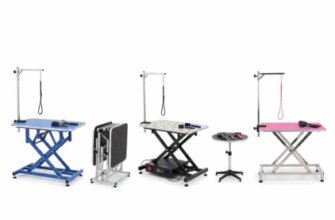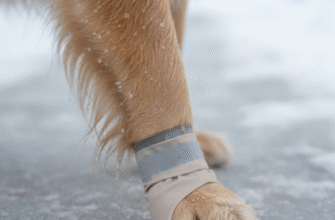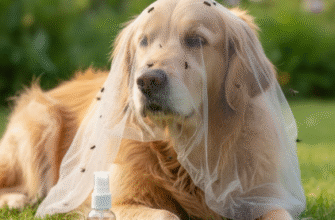Summer brings sunshine, longer days, and the urge to spend more time outdoors with our beloved canine companions. However, for owners of flat-faced breeds, often referred to as brachycephalic dogs, the rising temperatures demand a heightened level of awareness and specific preventative measures. Pugs, French Bulldogs, English Bulldogs, Boxers, Shih Tzus, and Pekingese, among others, possess those endearing squished faces, but this unique anatomy significantly impacts their ability to cope with heat, making them exceptionally vulnerable to overheating and heatstroke.
Understanding the Brachycephalic Challenge
The term ‘brachycephalic’ literally means ‘short-headed’. Generations of selective breeding for that characteristic flat-faced appearance have resulted in significant changes to the skull and upper respiratory tract. While undeniably cute, these alterations create inherent challenges, especially when it comes to breathing and regulating body temperature.
Key anatomical features contributing to heat sensitivity include:
- Stenotic Nares: These are narrowed nostrils, which physically restrict the amount of air a dog can inhale with each breath. Imagine trying to breathe through a pinched straw – it requires much more effort.
- Elongated Soft Palate: The soft palate, the fleshy tissue at the back of the roof of the mouth, can be excessively long in these breeds. It can partially obstruct the airway, especially during panting or exertion, leading to snoring sounds and breathing difficulties.
- Hypoplastic Trachea: The windpipe (trachea) itself may be narrower than usual, further limiting airflow to the lungs.
- Everted Laryngeal Saccules: Small sacs within the larynx can turn outwards due to the increased effort required for breathing, causing further obstruction.
These features collectively mean that brachycephalic dogs have to work much harder just to breathe normally, even in cool conditions. When the temperature climbs, their compromised respiratory system simply cannot keep up with the body’s need to cool down effectively.
Why Heat Poses an Extreme Risk
Dogs don’t sweat through their skin like humans do to cool off. Their primary cooling mechanism is panting. Evaporation of moisture from the tongue, nasal passages, and respiratory tract lining helps dissipate heat. However, for flat-faced breeds, this process is significantly less efficient.
Their shortened muzzles provide less surface area for heat exchange during panting. The narrowed airways mean they can’t move air as quickly or effectively. The increased effort required for panting can itself generate more body heat, creating a dangerous cycle. Consequently, their core body temperature can rise rapidly, leading to heat exhaustion and potentially fatal heatstroke much faster than in dogs with longer muzzles.
Critical Warning: Heatstroke in brachycephalic breeds is a veterinary emergency. Their compromised breathing means they can deteriorate very quickly once overheating begins. Prompt recognition of symptoms and immediate action are vital for their survival.
Recognizing the Danger Signs
Being vigilant and recognizing the early signs of heat stress is crucial for preventing a tragedy. If you own a flat-faced breed, watch closely for these symptoms during warm weather:
- Excessive, rapid, or noisy panting
- Heavy drooling, often thick and ropey
- Bright red or pale gums and tongue (initially red, can become pale or bluish as shock sets in)
- Difficulty breathing, gasping for air
- Lethargy, weakness, reluctance to move
- Vomiting or diarrhea
- Dizziness, stumbling, lack of coordination
- Collapse or loss of consciousness
Even mild signs should be taken seriously. Don’t assume your dog will simply cool down on their own if they seem slightly distressed. It’s always better to err on the side of caution.
Essential Summer Precautions for Flat-Faced Friends
Prevention is paramount when it comes to protecting your brachycephalic dog from the summer heat. Modifying your routine and environment can make a world of difference.
Timing is Everything: Walks and Exercise
Avoid the midday sun at all costs. The hottest part of the day, typically between 10 am and 4 pm, is the most dangerous time for these breeds. Schedule walks for the very early morning or late evening when temperatures are significantly cooler.
Keep exercise light. Strenuous activities like running, intense fetch sessions, or long hikes should be strictly avoided during warm months. Even in cooler parts of the day, keep walks short and at a leisurely pace. Always monitor your dog’s breathing and energy levels, stopping immediately if they show any signs of distress.
Consider surface temperatures. Pavement and asphalt can become scorching hot and burn paw pads. Stick to grassy areas or walk during cooler times when surfaces have had a chance to cool down. If you can’t hold the back of your hand comfortably on the pavement for five seconds, it’s too hot for your dog’s paws.
Cooling Strategies: Water, Shade, and Aids
Constant access to cool, fresh water is non-negotiable. Ensure water bowls are always full and readily available, both indoors and outdoors. Carry water and a portable bowl with you on any outing, no matter how short.
Provide ample shade. If your dog spends time outdoors, ensure there’s always a shaded, cool spot where they can rest. A shady tree, a covered porch, or a doghouse positioned out of direct sun are essential.
Utilize cooling aids. Cooling mats, vests, and bandanas can provide significant relief. These products work through evaporation or contain special gels that stay cool. Introduce them gradually to ensure your dog is comfortable wearing or using them.
Never, ever leave your dog in a parked car. Not even for a minute, not even with the windows cracked, not even in the shade. Temperatures inside a vehicle can skyrocket to deadly levels within minutes, creating a deathtrap for any dog, but especially for heat-sensitive brachycephalic breeds.
Verified Fact: On an 85°F (29°C) day, the temperature inside a parked car can reach 104°F (40°C) in just 10 minutes and soar to 119°F (48°C) within 30 minutes. These temperatures are rapidly fatal for dogs, particularly flat-faced breeds.
Indoor Environment Management
Air conditioning is your best friend. The safest place for your flat-faced dog during hot weather is indoors in an air-conditioned environment. Ensure your AC is working correctly before the heat waves hit.
Use fans. While fans don’t cool the air temperature itself, they help circulate air and can aid in evaporative cooling, making your dog feel more comfortable.
Keep curtains and blinds closed during the hottest parts of the day to block out solar heat and keep rooms cooler.
Provide cool resting spots. Tiled floors often stay cooler than carpets or dog beds. Allow your dog access to these cooler surfaces.
Travel Considerations
Travelling during summer requires extra planning. Ensure your vehicle’s air conditioning is reliable. Plan frequent stops for water and potty breaks in shaded areas. Avoid travelling during the hottest parts of the day if possible. Never leave your dog unattended in the vehicle during stops.
Responding to Overheating
If, despite precautions, you suspect your dog is overheating, immediate action is crucial. Move them to a cool, shaded, or air-conditioned area right away. Offer small amounts of cool (not ice-cold) water to drink. You can wet their body with cool water, focusing on the paws, groin, and neck area where major blood vessels are close to the surface. Using a fan to blow air over their damp fur can also help. Do not use ice or ice-cold water, as this can cause blood vessels to constrict, hindering the cooling process and potentially leading to shock.
Crucially, even if your dog seems to recover with these measures, contact your veterinarian immediately. Heatstroke can cause internal damage that isn’t immediately apparent. Professional veterinary assessment and potential supportive care are essential.
A Commitment to Comfort and Safety
Owning a flat-faced breed comes with the responsibility of understanding their unique physiological challenges. Their adorable looks are paired with a respiratory system that makes them particularly susceptible to the dangers of summer heat. By being proactive, observant, and prepared, you can ensure your brachycephalic companion stays safe, comfortable, and happy throughout the warmer months. Remember, their well-being depends on your vigilance and willingness to adjust routines to protect them from overheating.








